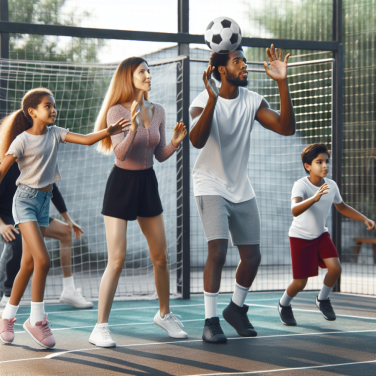Key Strategies in Sports Rehabilitation for Efficient Recovery of Athletes
While the concept of sports rehabilitation in athlete recovery is broad and comprehensive, we will take a closer look at some of the key strategies that are used to ensure athletes reach their full recovery potential. These strategies are essential in reducing the risk of re-injury, improving performance, and enabling athletes to return to their sport quicker and stronger.
1. Personalized Treatment Plan: There is not a one-size-fits-all approach when it comes to sports rehabilitation. Each athlete is unique, therefore, their treatment plans should be as well. A personalized treatment plan considers the athlete's age, fitness level, nature of the injury, recovery goals, and the sport they engage in.
2. Continuous Assessment and Evaluation: Regular monitoring and reassessment of the athlete's progress are crucial during the rehabilitation process. This provides evidence-based insights about the effectiveness of treatment strategies and helps adjust them as per requirements. These assessments can include musculoskeletal, biomechanical, and physiological evaluations, as well as mental health checks.
3. Multidisciplinary Team Approach: Rehabilitating an athlete is typically a team effort, including a diverse group of experts such as strength and conditioning coaches, physiotherapists, dietitians, sports psychologists, and more. This multidisciplinary approach allows for comprehensive treatment that considers all aspects of the athlete's health and wellness.
4. Progressive Loading: Progressive loading involves gradually increasing the stress being placed on the injured area to promote adaptive response. This method is essential in restoring the strength and function of the area, without causing further injury.
5. Pain Management: Aside from physical healing, managing an athlete's pain is another critical component in the sport rehabilitation process. This can include various methods like physical therapy techniques, medications, or psychological strategies such as cognitive behavioral therapy.
6. Physiotherapy: Physiotherapists play a huge role in sports rehabilitation, using various physical therapies such as exercise, manipulation, and massage to treat injuries. They also help devise a suitable exercise regime for the athlete to follow throughout their recovery process.
7. Nutrition and Hydration: An athlete's diet can significantly impact their recovery. Proper nutrition and hydration can aid in tissue repair, reduce inflammation, and maintain overall health and strength during the recovery period.
8. Psychological Support: Psychological factors such as stress and athletic identity can impact recovery. Providing psychological support during rehabilitation is vital to maintain the athlete's wellbeing, boost confidence, and manage apprehension related to their return to sport.
Read also:
Exploring the Multitude: A Comprehensive Breakdown of Soccer Teams in Paris"
Understanding the Significance of Sports Rehabilitation in Enhancing Athletic Performance
Sports rehabilitation is a specialized type of physical therapy designed to help athletes recover from injuries or surgery. This rehabilitation process can greatly influence an athlete's performance in their respective sports. Here, we aim to understand the importance of sports rehabilitation in enhancing the overall performance of an athlete.
Sport injuries are common, with many athletes experiencing them at some point in their career. These injuries, if not properly managed and treated, could lead to a decline in an athlete's performance or even end their sports career prematurely. This is where sports rehabilitation comes into play.
A key aspect of sports rehabilitation is the accurate assessment and diagnosis of the injury. This enables the sports therapist or physical rehab specialist to develop a suitable treatment plan that considers the athlete's condition, sport demands, and level of performance. Furthermore, an effective sports rehabilitation program also takes into account the athlete's physical and psychological readiness to return to sport.
One of the ways sports rehabilitation enhances an athlete's performance is through physical conditioning. During the rehabilitation process, strength and conditioning exercises are often incorporated to rebuild the athlete's physical strength. These exercises not only aim to restore the athletes' muscle strength and endurance but also enhance their flexibility and range of motion. This has direct effects on their ability to perform at their best when they return to their sport.
Notably, sports rehabilitation also includes sports-specific training. This means that the rehabilitation program incorporates elements of the athlete's sport into their recovery plan. For instance, a basketball player undergoing rehab may perform exercises that mimic basketball movements. Such sport-specific training allows the athletes to regain their sport-specific skills and helps them to adapt better when they return to their sport.
Another significant aspect of sports rehabilitation is injury prevention. The goal of sports rehab is not just to help athletes recover from injuries, but also to prevent future injuries. After thoroughly understanding the cause of the injury, strategies are developed as part of the rehab program to prevent recurrence. These could include reinforcing proper training and competition techniques or building up strength in weaker areas. So, the athlete returns to the sport not just recovered, but stronger and more resilient.
Additionally, sports rehabilitation is also pivotal in improving an athlete's psychological readiness. Coping with an injury can be psychologically challenging, often leading to feelings of frustration, anxiety, or depression. Sports rehabilitation can aid in managing these psychological issues, as it includes strategies that help athletes deal with these feelings. This support can lay the groundwork for a more confident return to the sport.




